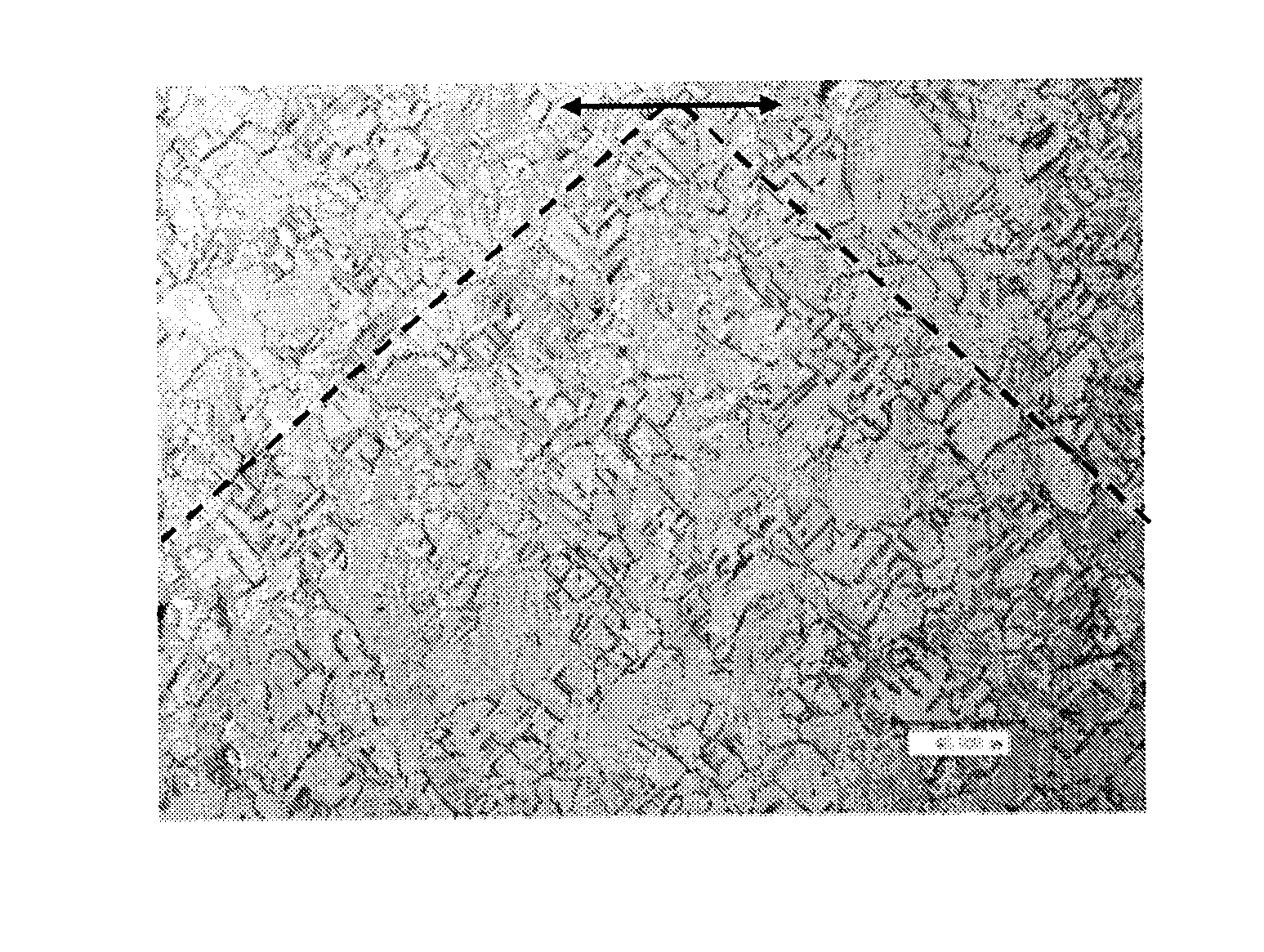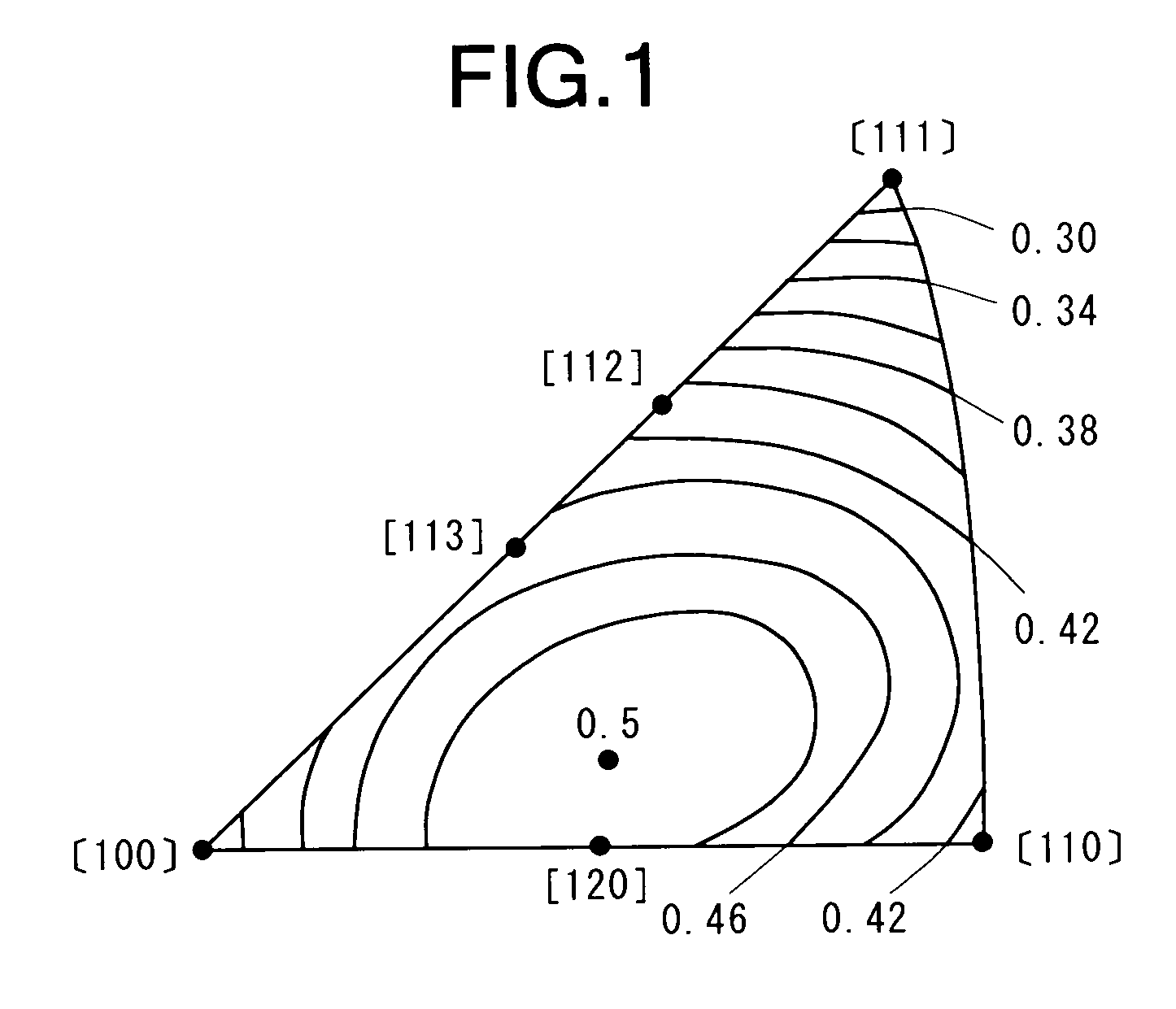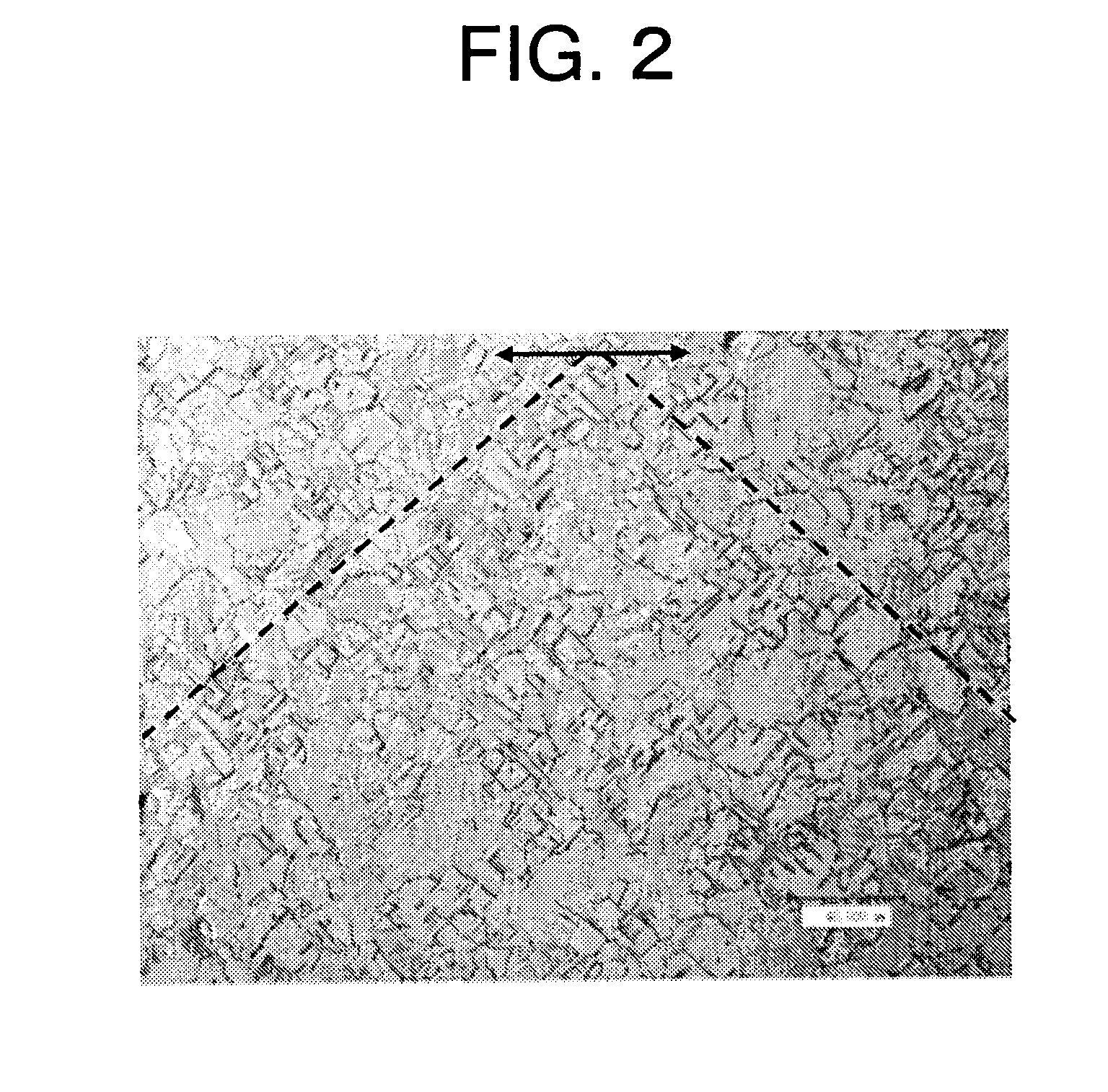Copper alloy sheet and method for producing same
a technology of copper alloy sheet and bending workability, which is applied in the direction of coupling contact parts, etc., can solve the problems of difficult to obtain a copper alloy sheet that meets both the desired strength and bending workability, the anisotropy of the bending workability of the copper alloy sheet is great, and the requirements for the stress relaxation resistance of the copper alloy sheet used for the materials of the parts are more severe. , to achieve the effect of excellent bending workability, excellent stress relaxation
- Summary
- Abstract
- Description
- Claims
- Application Information
AI Technical Summary
Benefits of technology
Problems solved by technology
Method used
Image
Examples
examples 1-19
[0100]There were melted a copper alloy containing 1.65 wt % of Ni, 0.40 wt % of Si and the balance being Cu (Example 1), a copper alloy containing 1.64 wt % of Ni, 0.39 wt % of Si, 0.54 wt % of Sn, 0.44 wt % of Zn and the balance being Cu (Example 2), a copper alloy containing 1.59 wt % of Ni, 0.37 wt % of Si, 0.48 wt % of Sn, 0.18 wt % of Zn, 0.25 wt % of Fe and the balance being Cu (Example 3), a copper alloy containing 1.52 wt % of Ni, 0.61 wt % of Si, 1.1 wt % of Co and the balance being Cu (Example 4), a copper alloy containing 0.77 wt % of Ni, 0.20 wt % of Si and the balance being Cu (Example 5), 3.48 wt % of Ni, 0.70 wt % of Si and the balance being Cu (Example 6), a copper alloy containing 2.50 wt % of Ni, 0.49 wt % of Si, 0.19 wt % of Mg and the balance being Cu (Example 7), a copper alloy containing 2.64 wt % of Ni, 0.63 wt % of Si, 0.13 wt % of Cr, 0.10 wt % of P and the balance being Cu (Example 8), a copper alloy containing 2.44 wt % of Ni, 0.46 wt % of Si, 0.11 wt % of...
PUM
| Property | Measurement | Unit |
|---|---|---|
| grain size | aaaaa | aaaaa |
| tensile strength | aaaaa | aaaaa |
| tensile strength | aaaaa | aaaaa |
Abstract
Description
Claims
Application Information
 Login to View More
Login to View More - R&D
- Intellectual Property
- Life Sciences
- Materials
- Tech Scout
- Unparalleled Data Quality
- Higher Quality Content
- 60% Fewer Hallucinations
Browse by: Latest US Patents, China's latest patents, Technical Efficacy Thesaurus, Application Domain, Technology Topic, Popular Technical Reports.
© 2025 PatSnap. All rights reserved.Legal|Privacy policy|Modern Slavery Act Transparency Statement|Sitemap|About US| Contact US: help@patsnap.com



